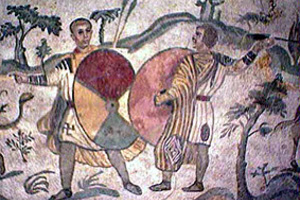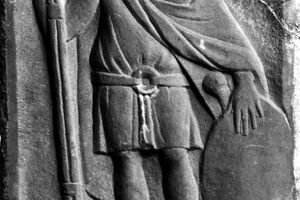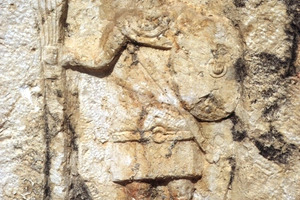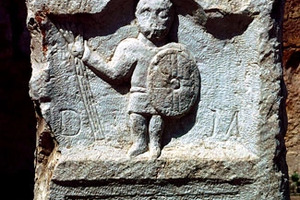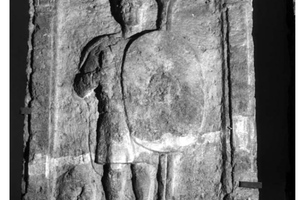Dominate Era - Lanciarius
It is believed that the Roman heavy infantry formation of the Dominate era consisted of six ranks (ordines). The first, second, third, and sixth ranks were composed of hastati spearmen. The fourth and fifth ranks could consist of archers (sagittarii) and skirmishers (lanciarii). The latter will be discussed in this article.
Even in the time of Pompey and Caesar the Roman army lacked light infantry capable of operating in loose formation as skirmishers, scouts, and pursuers. According to the available information, the auxiliary cohorts could not fully meet the need for light infantry, and some of the legionnaires, mostly young, fast and hardy, were allocated to the antesignani, a temporary light infantry unit.
By the start of III century CE the need for light infantry had only increased, especially in the east, where Rome's opponents, the Parthians and later the Sassanid Persians, traditionally used a lot of missile infantry and cavalry. In addition, the heavy infantry of the Roman army was now mostly used defensively, which only increased the army's need for skirmishers. Therefore, since the end of the third century CE lanciarii, light infantry armed with several javelins (light or heavy) and shields, became the constant part of legions and auxiliary cohorts. For these fighters mobility and stamina meant much more than passive protection from armour, so lanciarii could go into battle not only without body armor, but even without helmets. In combat the lanciarii could, depending on the circumstances, either stand in the fourth rank of the heavy infantry formation and throw javelins from there, or act in a loose formation in front of a phalanx of hastati. The lanciarii also performed scouting and pursuing retreating enemies. According to Ammianus Marcellinus, the hastati were expressly forbidden to leave the formation for pursuit, a task assigned to the lanciarii and cavalry.
The great importance of the lanciarii is also confirmed by the fact that there were many independent army units consisting entirely of lanciarii, some of which later received the status of Palatine, the elite ones.
Equipment
The equipment of the lanciarii of the Dominate era may include the following elements:
Fabric and leather products:
- Upper sleeved tunic (tunica manicata), made of wool
- Underwear sleeved tunic (tunica manicata), made of wool
- Pannonian cap (pileus pannonicus)
- Leggings (bracae)
- Cloak (sagum or chlamys)
- Military boots (campagi militaris)
- Cingulum
- Focale
- Socks
- Windings
Elements of protective equipment made of metal and wood:
Weapons:
- Spatha
- Light javelin (lancea)
- Heavy javelin (spiculum)
- Plumbatae
Other elements:
The lanciarius set may not contain all of the aforementioned items. The javelins might be of just one type, light or heavy, and the sword might not be present at all.
Reconstruction
The lanciarius kit is almost the simplest and cheapest kit available to the Dominate era, and consists of only clothing, a shield, and a pair of javelins. Clothing set should start with a red woolen sleeved tunic, a white linen underwear sleeved tunic, campagi shoes and a military belt (cingulum militare). As a raincoat, sagum is suitable, as it is simpler and cheaper to manufacture, but with the development of the kit it makes sense to replace it with chlamys.
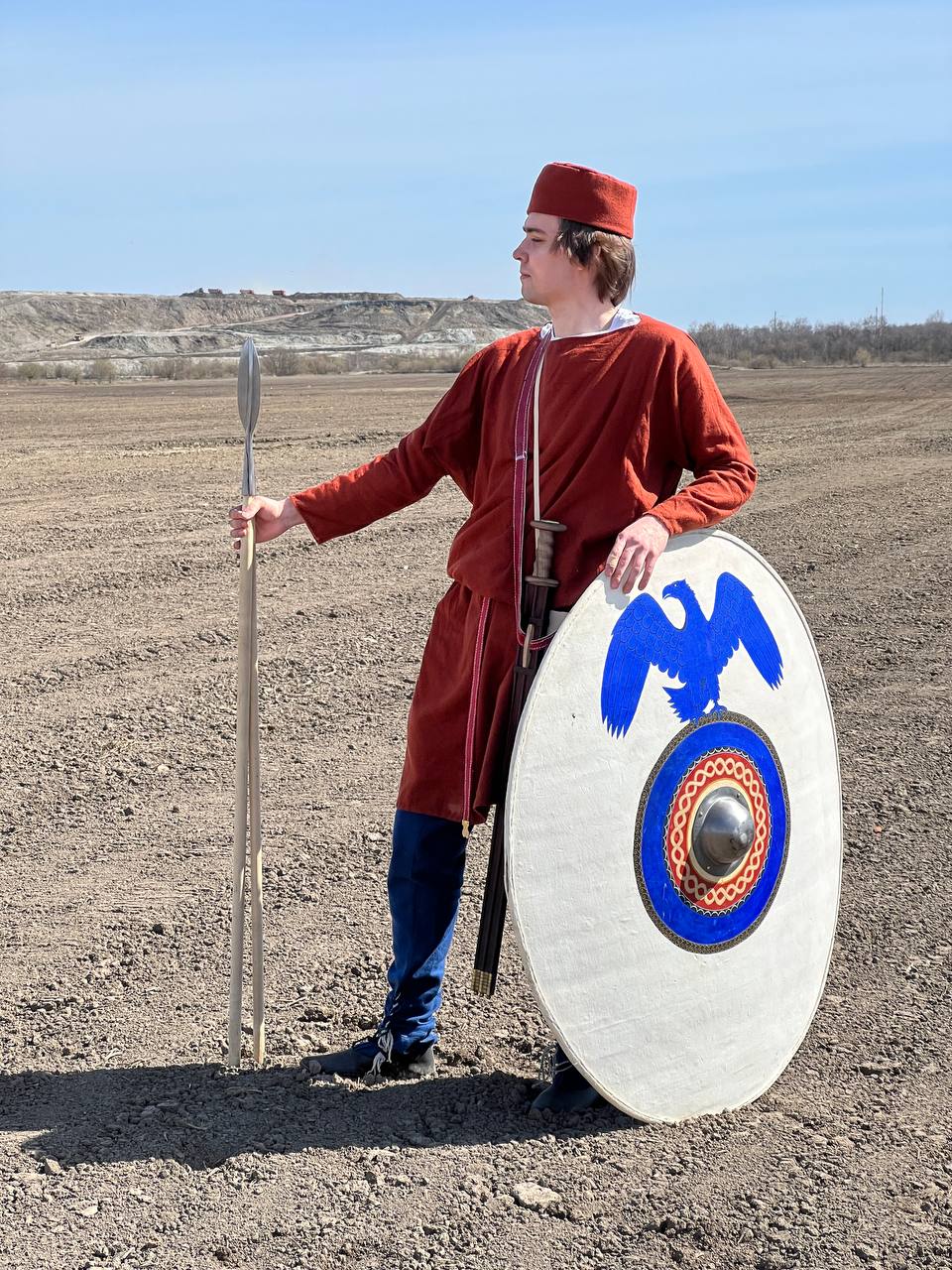 Dominate-era lanciarius with two lanceas
Dominate-era lanciarius with two lanceas
Related topics
Dominate, Dominate-era Roman military, Late Roman Empire
Literature
1) The Roman Army in the IV century. From Constantine to Theodosius. A.V. Bannikov
2) Armies of the Late Roman Empire. AD 284 to 476. History, Organization and Equipment. G. Esposito
3) De Re Militari. Publius Flavius Vegetius Renatus
4) Rerum Gestarum. Ammianus Marcellinus
5) Parallel lives. Plutarch

 Gallery
Gallery






